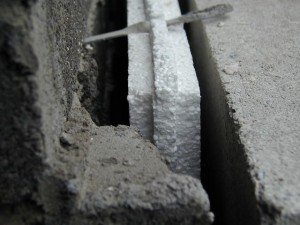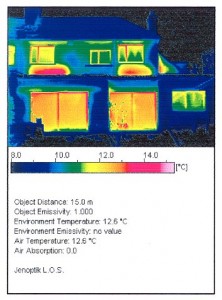This is the HomePage of my Technical Blog … but on a separate WebPage (see the toolbar above), I have been slowly building content, with links to related sources of information, on the subject of a CIB Working Commission 108 International Climate Change Project, which is about to enter its final important stage.
When published in the spring/early summer of next year … 2011 … the CIB W108 Report: ‘Sustainable Climate Change Adaptation in the Built Environment’ will comprise 2 Parts:
I – International Synthesis on Sustainable Climate Change Adaptation.
II – National Perspectives on Sustainable Climate Change Adaptation.
.
Today, 18 November 2010 … I uploaded onto that separate WebPage the National Report for ‘IRELAND’, which will appear in Part II of the CIB Publication. I am the person who drafted this report … and it has not been an easy task ! You will see that much attention is paid to institutional and implementation issues.
I now invite comments on the National Report … any comments … from those with a particular interest in the subject … and from the general public.
Comments should arrive here no later than Monday, 20th December 2010 … pretty please !
.
Before commenting upon the National Report, however, it would be useful if you also took a glance at the following three relevant documents …
- Ireland’s 5th National Communication (NC5) under the 1992 United Nations Framework Convention on Climate Change, dated 3 March 2010 ;
- UNFCCC In-Depth Review of Ireland’s 5th National Communication (NC5), dated 2 November 2010 ;
- EU WHITE PAPER – Adapting to Climate Change: Towards a European Framework for Action … European Commission Communication COM(2009) 147 final, dated 1 April 2009.
.
2009 EU White Paper – ‘Introduction’ (Page 3, first three paragraphs)
Climate change increases land and sea temperatures and alters precipitation quantity and patterns, resulting in the increase of global average sea level, risks of coastal erosion and an expected increase in the severity of weather-related natural disasters. Changing water levels, temperatures and flow will in turn affect food supply, health, industry, and transport and ecosystem integrity. Climate change will lead to significant economic and social impacts with some regions and sectors likely to bear greater adverse affects. Certain sections of society (older people, people with activity limitations, low-income households) are also expected to suffer more.
Addressing climate change requires two types of response. Firstly, and importantly, we must reduce our greenhouse gas emissions (GHG), i.e. take mitigation action … and secondly, we must take adaptation action to deal with the unavoidable impacts. The EU’s recently agreed climate change legislation puts in place the concrete measures to reach the EU’s commitment to reduce emissions to 20% below 1990 levels by 2020 and is capable of being amended to deliver a 30% reduction if agreed as part of an international agreement in which other developed countries agree to comparable reductions and appropriate contributions by economically more advanced developing countries based on their responsibilities and capabilities. However, even if the world succeeds in limiting and then reducing GHG emissions, our planet will take time to recover from the greenhouse gases already in the atmosphere. Thus, we will be faced with the impact of climate change for at least the next 50 years. We need therefore to take measures to adapt.
Adaptation is already taking place but in a piecemeal manner. A more strategic approach is needed to ensure that timely and effective adaptation measures are taken, ensuring coherency across different sectors and levels of governance.
.
2009 EU White Paper – The Proposed EU Framework: Objectives & Action (Page 7, #3)
The Objective of the EU’s Adaptation Framework is to improve the EU’s resilience to deal with the impact of climate change. The framework will respect the principle of subsidiarity and support overarching EU objectives on sustainable development.
The EU’s framework adopts a phased approach. The intention is that phase 1 (2009-2012) will lay the groundwork for preparing a comprehensive EU Adaptation Strategy to be implemented during phase 2, commencing in 2013.
Phase 1 (2009-2012) will focus on four pillars of action:
1) building a solid knowledge base on the impact and consequences of climate change for the EU ;
2) integrating adaptation into EU key policy areas ;
3) employing a combination of policy instruments (market-based instruments, guidelines, public-private partnerships) to ensure effective delivery of adaptation ; and
4) stepping up international co-operation on adaptation.
For phase 1 to be a success … the EU, national, regional and local authorities must co-operate closely.
The proposals set out in this paper cover actions to be taken in the first phase and are without prejudice to the future structure of the EU budget and to the current and future multi-annual financial framework.
.
IRELAND – Part II National Report for CIB W108 Climate Change Project
In the spring of 2007, the Department of Environment, Heritage & Local Government (DEHLG) – Ireland’s statutory Authority Having Jurisdiction (AHJ) – published the ‘National Climate Change Strategy 2007-2012’. This document can be accessed and downloaded at … http://www.environ.ie/en/Environment/Atmosphere/ClimateChange/ It is of concern to note, however, that ‘Climate Change’ related content is not easy to find on this WebSite ! Comprehensive Enabling Climate Change Legislation, which this Department, and the Irish Government, initially promised for Easter 2010 … and then June 2010 … has, at the time of writing (mid-November 2010), still not made an appearance in the Dáil (Ireland’s Parliament) !
The Department of Environment, Heritage & Local Government (DEHLG) lacks strong and competent political direction and the institutional capacity to effectively co-ordinate and oversee the implementation of National Climate Action. For this reason, closer scrutiny of its activities will be required from the Dáil Committee System.
Contrary to current practice … Foreign Development Aid should not be used to obtain any sort of domestic or in-country credit for Ireland’s National Climate Change Strategy !
Specifically concerning Climate Change Adaptation … the following is stated on Page 45 of the 2007-2012 National Climate Change Strategy Document …
‘As part of a comprehensive policy position on climate change, the Government is committed to developing a national adaptation strategy over the next two years. This strategy will provide a framework for the integration of adaptation issues into decision-making at national and local level.’
The DEHLG does not, however, intend to publish a National Climate Change Adaptation Strategy until 2013 (Ireland’s NC5).
.
Climate Change Action in Ireland – Summary
Ireland’s Climate Action to date, i.e. effective Climate Change Mitigation and Adaptation Implementation, has been laboriously slow and lethargic. It may best be characterized as ‘Business as Usual’, combined with some ‘Cosmetic Tinkering at the Edges’ as the need arises … the universal excuse, almost a mantra, being that “the competitiveness of the national economy must not be impaired”. National Performance has been guided by an official policy of exploiting to the maximum all of the UNFCCC Kyoto Protocol’s Flexibility Mechanisms while, at the same time, showing a stark indifference to Climate Adaptation … an over-reliance on Marketing Campaigns in the public media as opposed to mandatory implementation on the ground … and a preference for ‘Soft’ Performance Estimation on paper/computer monitor rather than the more painful ‘real’ performance calculation, which would generate reliable data and statistics to be managed by Ireland’s Central Statistics Office, in co-ordination with EuroStat in Luxembourg.
Despite the importance of the Construction Sector in Ireland and Europe … and its very large adverse impacts on regional and local climate … a significant barrier to concerted Sectoral Climate Action exists because ‘construction’ is not yet identified as a separate Sector, by either the Environmental Protection Agency (Ireland) or the European Environment Agency (Copenhagen) … in National and European Greenhouse Gas (GHG) Emission Databases. Furthermore, our systems of governance and institutional organization, at both levels, do not appear to have the capacity … either to understand or to manage an effective response to the climate challenges created by the Sector.
Climate Change Mitigation Efforts are failing in Ireland; the current economic downturn merely camouflages that unpalatable fact. Therefore, the necessary corrective actions described in this National Report fall under the heading of ‘Climate Change Adaptation’.
.
.
END



